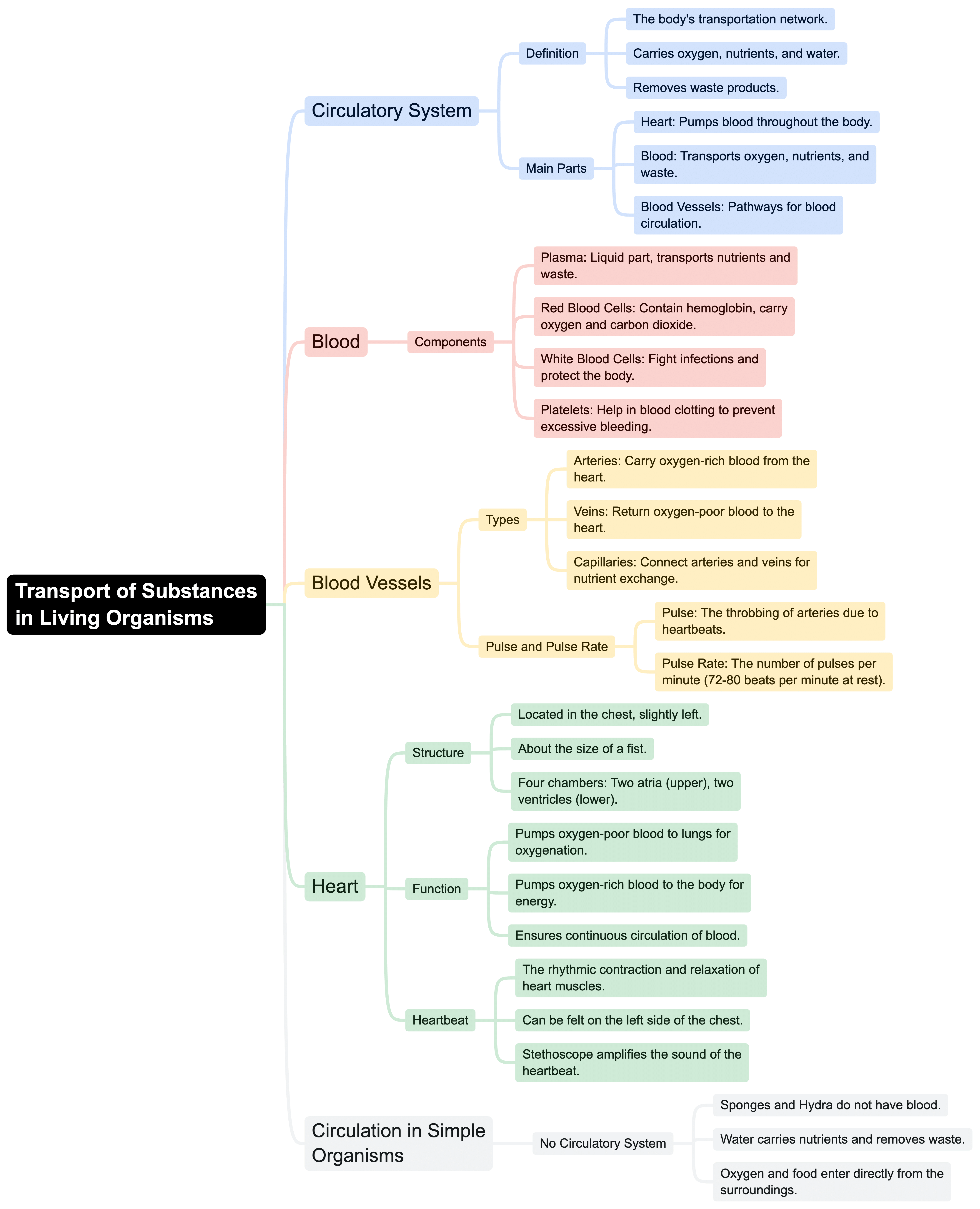Class 7 Exam > Class 7 Notes > Science Class 7 (Old NCERT) > Mind Map: Transportation in Animals and Plants
Mind Map: Transportation in Animals and Plants | Science Class 7 (Old NCERT) PDF Download

The document Mind Map: Transportation in Animals and Plants | Science Class 7 (Old NCERT) is a part of the Class 7 Course Science Class 7 (Old NCERT).
All you need of Class 7 at this link: Class 7
|
111 videos|435 docs|28 tests
|
FAQs on Mind Map: Transportation in Animals and Plants - Science Class 7 (Old NCERT)
| 1. What are the main transportation systems in animals and how do they function? |  |
Ans. Animals primarily utilize circulatory and respiratory systems for transportation. The circulatory system, which can be open or closed, transports nutrients, gases, and waste products throughout the body. In vertebrates, the heart pumps blood through a network of vessels, while in invertebrates, blood may flow freely in body cavities. The respiratory system allows for gas exchange; in mammals, for example, oxygen is inhaled into the lungs and transported by red blood cells to tissues, while carbon dioxide is expelled.
| 2. How do plants transport water and nutrients? |  |
Ans. Plants use two main systems for transportation: the xylem and the phloem. The xylem transports water and dissolved minerals from the roots to the leaves through a process called transpiration. Water evaporates from leaf surfaces, creating a negative pressure that pulls more water upward. The phloem, on the other hand, distributes sugars and other organic compounds produced during photosynthesis from the leaves to other parts of the plant. This transport occurs through a process called translocation.
| 3. What role do transport proteins play in cellular transportation? |  |
Ans. Transport proteins are crucial in cellular transportation as they facilitate the movement of substances across cell membranes. These proteins can be classified into two main types: channel proteins and carrier proteins. Channel proteins create passageways for specific ions or molecules to pass through, while carrier proteins bind to substances and change shape to shuttle them across the membrane. This process is essential for maintaining homeostasis and enabling cells to acquire necessary nutrients and expel waste products.
| 4. How do animals adapt their transportation systems to different environments? |  |
Ans. Animals adapt their transportation systems to suit various environments through structural and functional modifications. For example, aquatic animals like fish have gills that efficiently extract oxygen from water, while terrestrial animals have lungs adapted for breathing air. Additionally, some species may develop larger hearts or more efficient vascular systems to cope with high-altitude conditions or increased physical activity, ensuring adequate oxygen and nutrient delivery to tissues.
| 5. What is the significance of osmosis in the transportation process in both animals and plants? |  |
Ans. Osmosis is a vital process in the transportation of water across cell membranes in both animals and plants. In animals, it helps maintain fluid balance and cell turgor, which is crucial for cellular function. In plants, osmosis is essential for maintaining turgor pressure within cells, allowing them to remain rigid and upright. The movement of water through osmosis also plays a role in nutrient transport, as dissolved minerals are taken up by root cells and moved throughout the plant via the xylem.
Related Searches
















